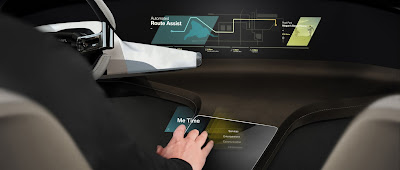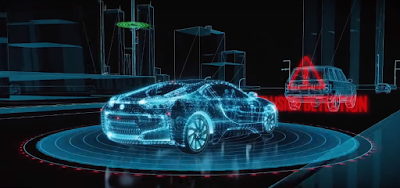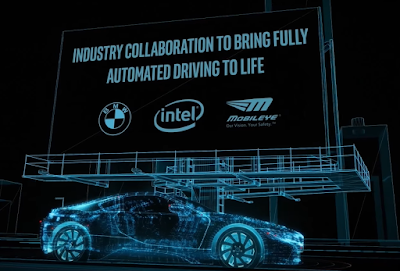The Automobile industry is looking towards the Autonomous
Cars. Within a few years, the “human-driven” cars will be completely replaced
by Autonomous cars. Experts from BMW, Carnegie Mellon University and Intel opine
that the autonomous cars are going to change the interior of a car.
 |
| Autonomous Cars Interior |
There are many advantages that enhance the transit of the
passenger, where being driverless is the most significant one. Controlling the
car during the transit is major aspect the resources become redundant. With autonomous
cars, this redundancy can be eliminated, which can relax the need of a driver. This
ultimately results in a car revolution, which reshapes the interior of the car
look like living room, offices or even sleeping pods.
Hans-Joachim Faulstroh, the Head of Interior, HMI and UX at
BMW, Munich compared the autonomous cars to emotional possessions.
We love our cars because they are emotional possessions. We have a deep relationship with them. We take care of them and they take care of us.
At the Consumer Electronics Show (CES) 2017, BMW has
showcased its prototypes – BMW i Inside Future – with the possible User
Experience with Autonomous Cars. Here is a glance at these sculptures.
 |
| BMW i Inside Future Sculptures |
The BMW i Inside Future represents the future with the car
controls like temperature, music, speed control, HUD, routing, mobile docking etc.
can be handled via BMW HoloActive Touch. The MBW HoloActive Touch is a hologram
display that enables the user to interact with the holograms its “floating
images”.
Dr. Stan Cladwell, Associate Professor at Carnegie Mellon
University has devoted his life for developing smart transportation systems. He
said that the first autonomous car was conceptualized in 1939 itself, by
General Motors (GM). He says that the first public autonomous car will be
available by 2020!
It was at the 1939 World’s Fair that General Motors announced its vision for the first autonomous vehicle. It wasn’t very long after that we began thinking, ‘Wouldn’t it be great if we didn’t have to actually operate them? I think we’ll look back one day and say, ‘When did we stop driving?’ and not really know. It’s going to happen gradually as the technology becomes less expensive and more publicly accepted.
Indeed, similar is the evolution of communication from
letters to smartphones, which has devastated many conventional needs of
computers, communication devices, audio players, video players and many other
devices. Today, the world grew and is growing so that it cannot be held without
a mobile device intact!
 |
| Autonomous Car Simulation |
Consumer Technology Association, a survey association, has conducted
two different surveys. The first survey is about the pro-autonomous cars and
the other is about the contrasting aspect. The first survey has revealed that
70% of the participants are interested in testing a driverless car and 62% of
the participants are ready to replace their conventional cars with the
autonomous ones. The second survey has revealed that 78% of the participants
are afraid of the autonomous cars due to various reasons.
 |
| Partners of Autonomous Car development |
Technically speaking, be it good or bad, the degree is very
high. The advantages – being driverless, minimal interaction with the vehicle
during transit, time optimization, utilization of fuel efficiently, route
mapping – are not being completely balancing the security aspect of these
autonomous cars. However, autonomous cars can be noted as a remarkable
advancement in the automobile industry.










0 comments:
Post a Comment